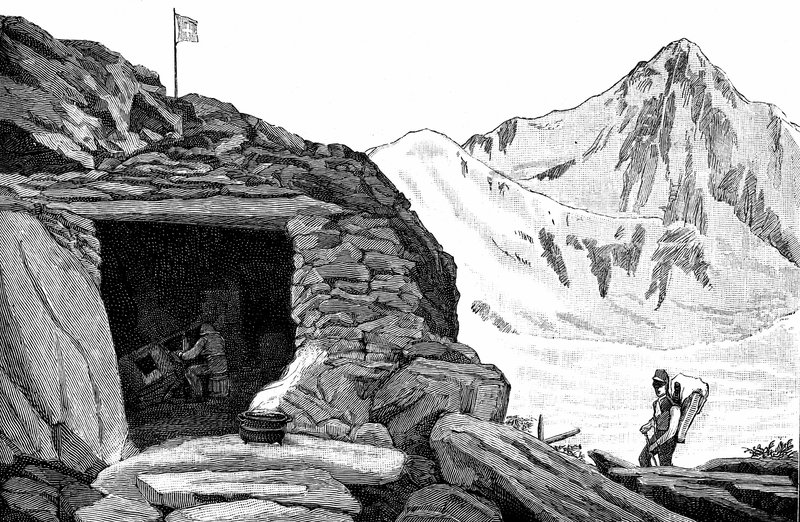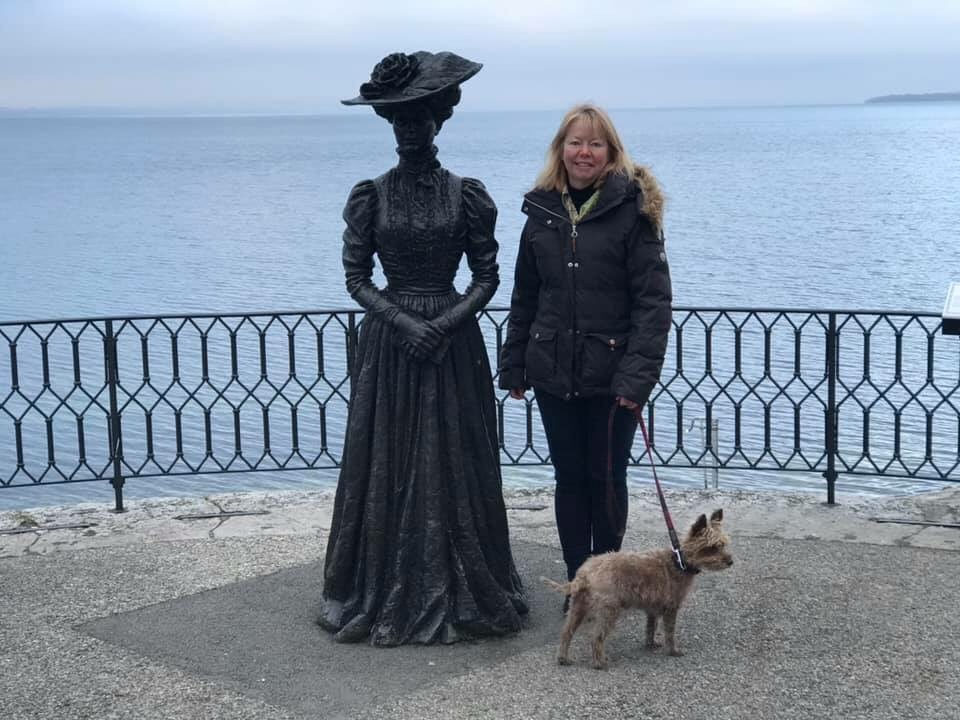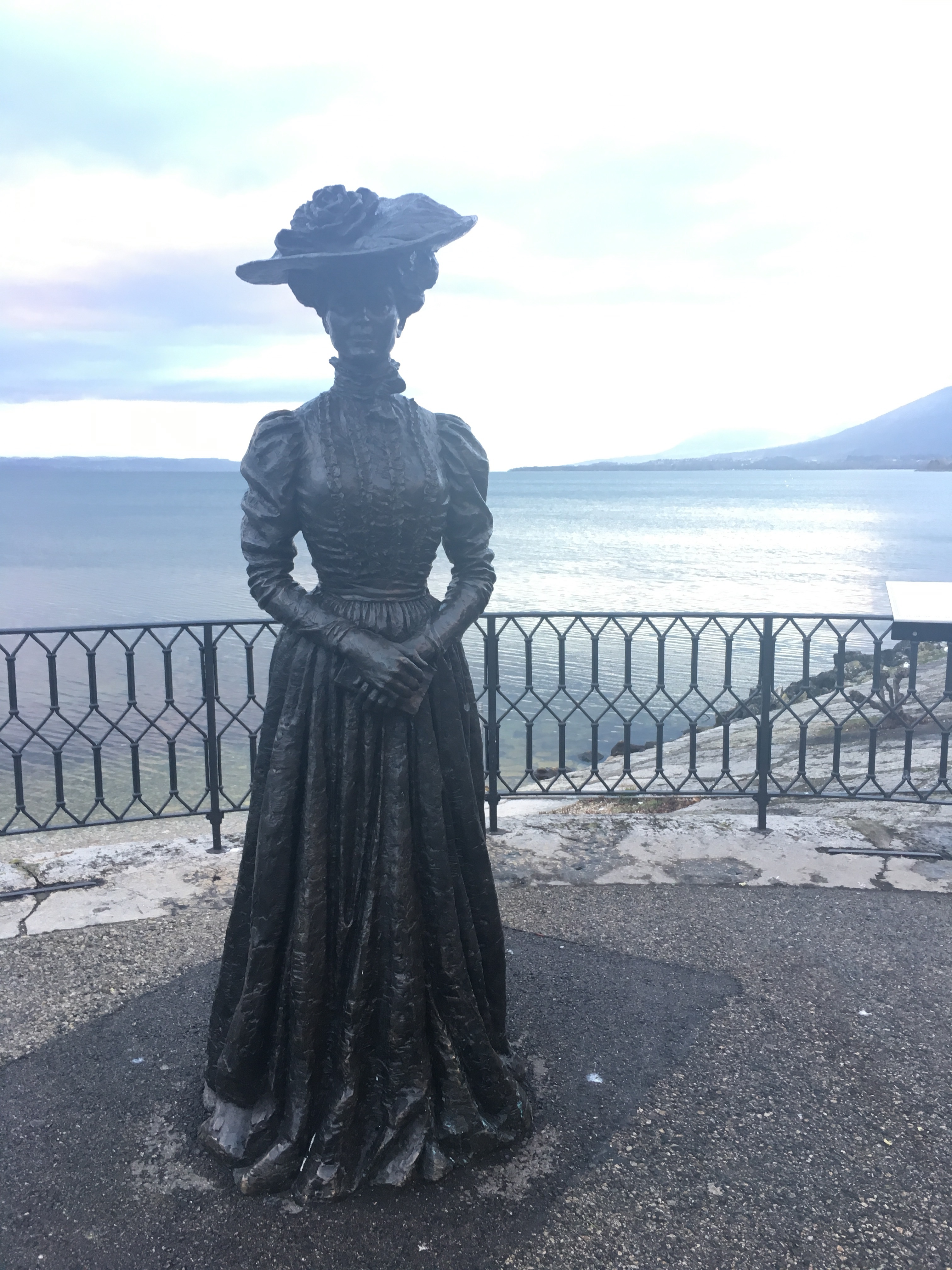The snow-capped mountains were illuminated by the vibrant red, gold and bronze shafts of light reflecting through the evening sky. The sun was setting and the prospect of a New Year and new beginnings were just a few hours away.
THE HEART OF EUROPE – This is an ancient land of towering granite peaks and deep, deep lakes. A territory chiselled and moulded by vast glaciers of ice and snow. In this land of lakes and mountains the air is clear and crisp. The snow is dazzlingly white and the water of the lakes is translucent. Large fish swim lazily beneath the surface. The fishermen are off hiking in the mountains, the fish can relax and dream. People stroll along the promenade, inhaling the delicious, peaceful ambience of Switzerland. This is a perfect place to think, consider and plan. As the light fades on the closing year, it is time to welcome new adventures and toast the future.
A LADY dressed in an elegant gown graces the waterfront. Just a few yards away a suited gentleman raises his hat to her in a gesture of greeting and respect. Perhaps they will meet in the Winter Garden of the Beau Rivage Hotel for tea. The lady has a composed expression, she appears to be day-dreaming. Stood alone by the water, lost in thought. The gentleman is a scientist from the university. He’s done some important work collecting fossils from the sandstone cliffs that rise steeply behind the town. He’s actually quite a character, recently returned from Edinburgh where he delivered a lecture to a packed audience. He has suggested that this area of Switzerland, in the past, was completely covered with snow and ice. On his daily walks in the hills he has, he claims, found much evidence to support his theory of ‘glaciation’. In his lectures he outlines his theory that the whole of Europe has gone through a series of ice ages in the past, when vast areas of the continent and all of Switzerland were covered with ice and snow. He is charismatic and passionate.

The lady is a long-time admirer of the gentleman. He is an acquaintance of her brother and she has heard details of his research and his theories in family conversation. Many years later they will marry. For now though the lady’s intentions are firmly fixed on getting to know the gentleman a little better. Her handkerchief falls carelessly to the ground, swirling gently in the breeze. Her chivalrous passer-by scoops it up and offers it to her with a small bow. Inclining her head gently forwards the lady accepts. An invitation to tea is immediately forth-coming. Even in the mid 19th century one thing leads to another, and before long they were taking daily walks in the hills behind the town. Mr Agassiz was explaining to Ms Cabot about the history of the planet, and how you could read that history in the rocks, as long as you knew how to interpret them. He explained that this was a new science known as geology.
MISS CABOT found his conversation entrancing and really very attractive. He explained, in great detail, about the layers that made up the rock and how these layers, which he called sediments, started off as soil and mud, and were then slowly compacted over thousands and thousands, even millions of years. Squeezing and extracting air particles from the layers, until little by little they were compressed into solid rock. By examining the rock layers and their contents, using a small geologist’s hammer Mr Agassiz demonstrated the presence of fish skeletons in the hillside. During their increasingly frequent walks together, they pondered the presence of these fossil remains in a land-locked country, far above the level of the lake and far from the open sea. He also showed Ms Cabot smoothed rock surfaces, which he asserted had been created by vast amounts of ice, loaded with debris, scratching and grinding its way through the landscape scouring the rock face smooth and clean.
MR AGASSIZ regaled Miss Cabot with tales of his summers spent in a wooden hut, precariously constructed at the side of the Aar Glacier. He spent several weeks on the glacier observing the ice. Many local people thought he was slightly deranged. In fact his intentions were seriously scientific. Here in Switzerland in this land of snow and ice and mountains Mr Louis Agassiz developed the theory of glaciation which is widely accepted across the globe today. For several consecutive summers he camped on the glacier, observing the movement of the ice as it progressed, under gravity, slowly down the valley. He saw first hand the ice carving and scrapping its way through the landscape, shaping and changing it. Detractors called the Agassiz hut ‘Auberge Neuchatelois‘ a mocking reference to his position at the University of Neuchatel, and the level of comfort found in the ‘hut’.

HOWEVER these tales of pioneering adventure and scientific endeavour sealed the fate of Miss Cabot. Years later in the United States of America Miss Cabot and Mr Agassiz would continue their relationship and later be married. He became a Professor at Harvard. She became the first principal of Radcliffe College, an annex of Harvard University opened to teach women in 1879. On his death she devoted years to editing and cataloguing his work, ensuring his ideas would be remembered for generations.
COULD IT BE that the clear air and luminous sunsets of Switzerland contributed in some small way to their romance and marriage? As one day fades then the next day dawns offering possibility, hope and inspiration. From the charming, small city of Neuchatel to the Charles River and Harvard Yard, a Swiss geologist crosses the Atlantic to spread the word on his scientific theories. His partner in crime is none other than the enigmatic woman who accidentally dropped her handkerchief on the promenade in Switzerland a decade or so earlier.

Notes:
- Inspired by a trip to Neuchatel, Switzerland for New Year, 2018
- Other articles featuring mountains and Switzerland by the same author:
- Switzerland – life in the mountains as the ice melts and glaciers retreat…
- Grimsel Hospiz and Grimsel Pass, Switzerland
- Glaciers and Mountains in Switzerland
NOTE – In the 19th century numerous romances began whilst travellers embarked upon the Grand Tour. Daisy Miller the heroine in Henry James’ eponymous novella meets a young gentleman in Montreux, Lake Geneva only to encounter him again in Rome six months later. Whilst there is mutual attraction, for them there is no happy ending!
Written: 04-01-2019
An album of images from Neuchatel (January, 2019)


- Updated: 20-01-2019
- Updated: 10-09-2020








Ah, Miss Cabot. I believe she was an artist and recorded layers of rocks in her sketchbook to the delight of her suitor. Janet, I love how you look at something, give it time to percolate in your brain (perhaps while sitting in your thinking chair), fill in the details, and then write a story to make your readers think.
LikeLiked by 1 person
I love this story and can’t help being incredibly curious about Miss Cabot. Cabot is a very common name in the Island of Jersey which gave its name to the USA State of New Jersey. I wonder where Miss Cabot hailed from in the US, possibly New England where I believe the name is often found too? ….I can just picture the slight and oh so elegant Katharine Hepburn playing the part of Miss Cabot in an imaginary film based on this lovely story, immortalised by Janet and the bronzes. It is curious that many many years ago, my own mother while walking her energetic German Shepherd dog actually met Katharine Hepburn who was discreetly holidaying in a private home in Trinity, Jersey. Janet’s story and the mention of the Cabot surname just took me pleasantly back 50 years, quite a stroll down Memory Lane! Thank you
LikeLiked by 2 people
How lovely Francesca! I just love this! You know in life it’s all about noticing……lots of love xxxx
LikeLiked by 1 person